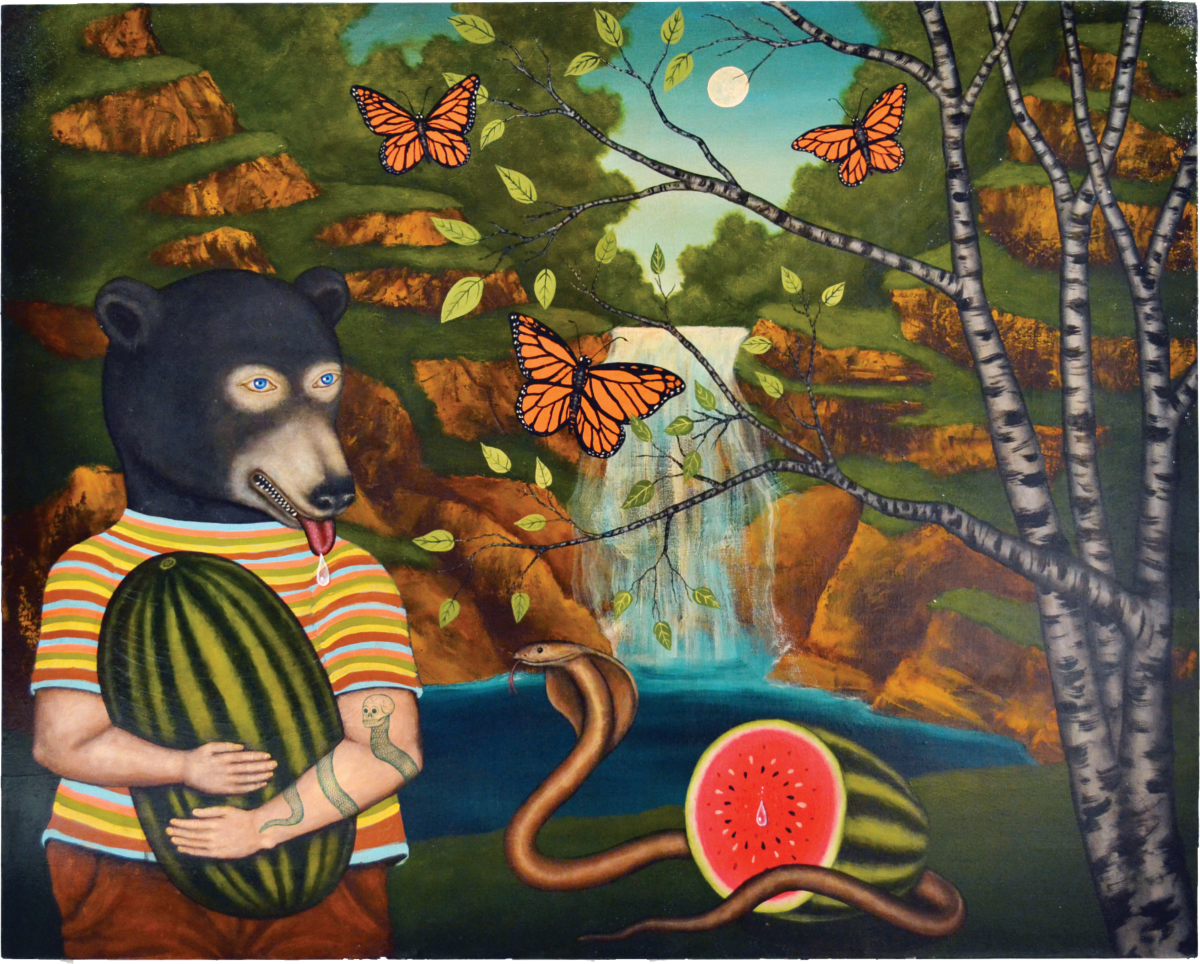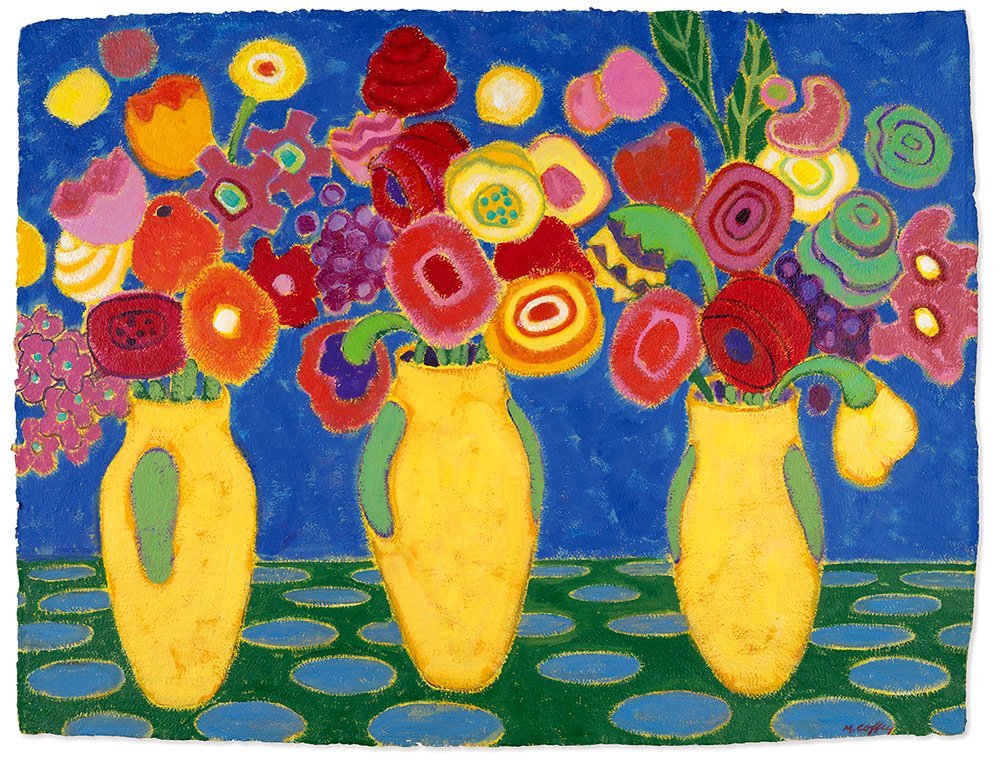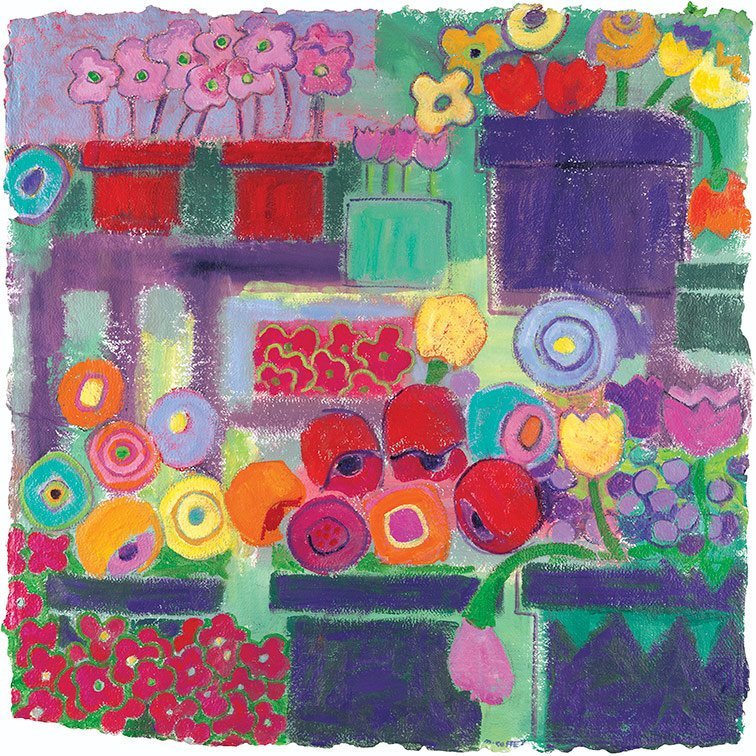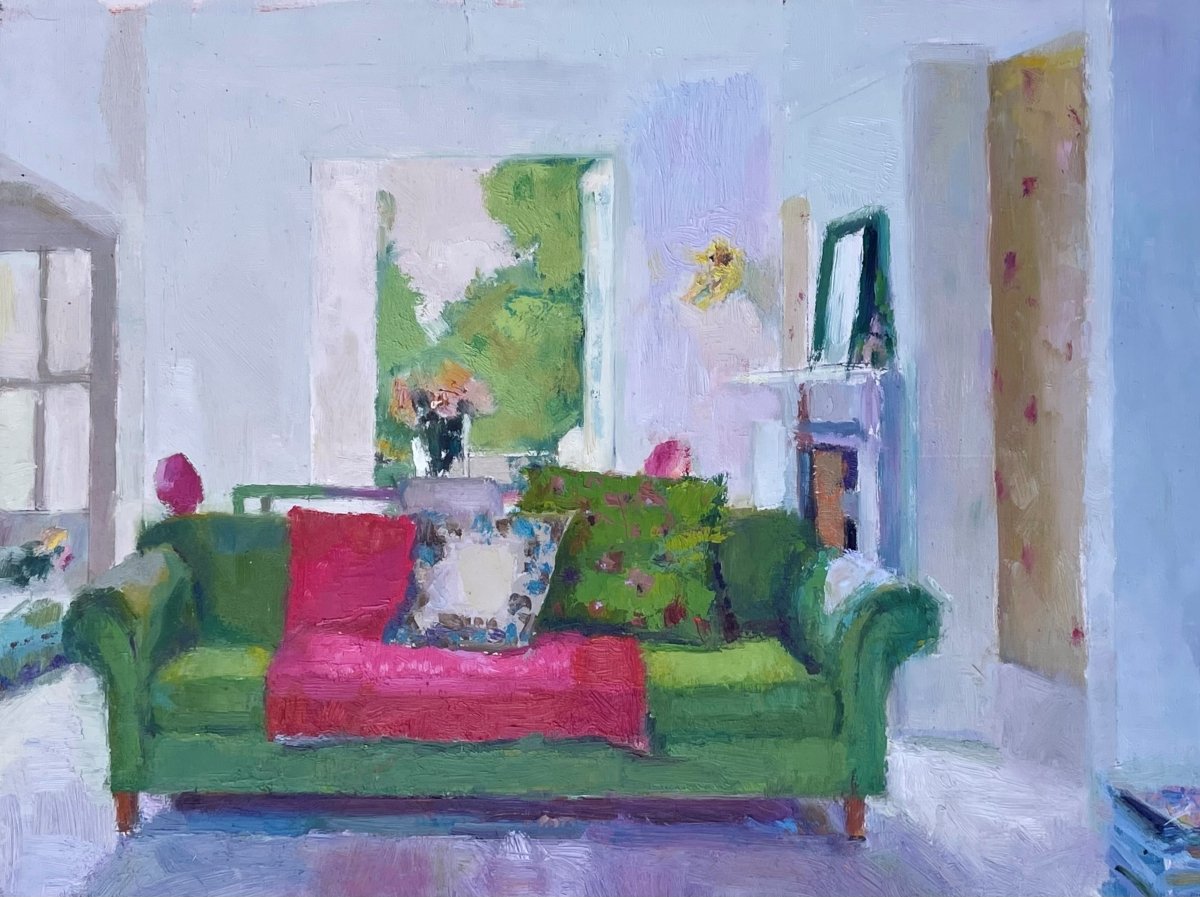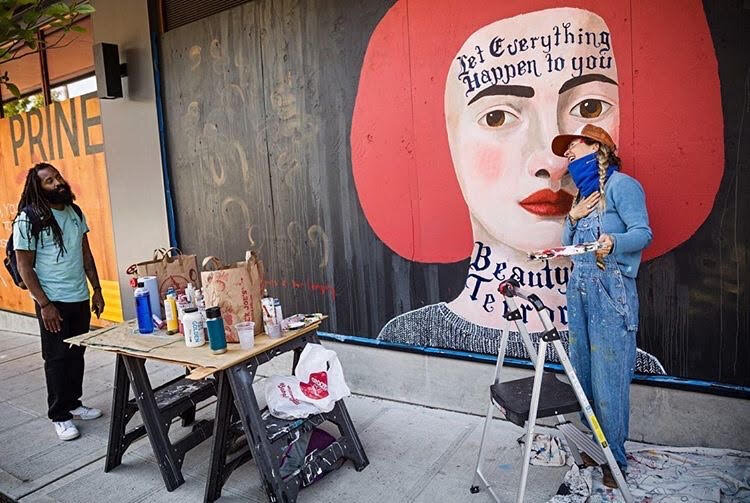*To view the original article on the Shepherd Express website, please click HERE
Fred Stonehouse Evades Easy Categories
BY SHANE MCADAMS MAY 11, 2022
Fred Stonehouse PATCH, Acrylic on Canvas, 48 x 60”
On an imaginary spectrum from pure abstraction to crisp representation, I often wonder which side possesses the edge in revealing the private realms of the artist. On one hand, an intuitive composition of formal marks is the deepest and most interior language imaginable, but on the other hand, it sometimes is too much of an interpretive inkblot. While objective subject matter tends to force the terms, it also has the potential to burrow into spaces with more specificity … even if the specificity leads back to uncertainty.
This is a rhetorical consideration, and the answer is “both,” and “it depends.” Nevertheless, it seemed a helpful framework to place in front of the work in Fred Stonehouse’s current exhibition, “Falling Waters,” at Tory Folliard Gallery on view through May 28. At least it did for me in the wake of a night of weird dreaming. Stonehouse’s work teems with detail and specificity. Its superficial resolution and directness almost seem to spurn any sort of abstract interpretation. Even the most uninitiated viewer would refrain from referring to any of his cast of tightly rendered objects and characters as “abstract.” Every piece of content is identifiable if not nameable. From a butterfly, a snake, a sparrow, and a frog in Lost Creek Falls, to a tiger and a trout in Catch, the viewer’s left brain doesn’t have to do too much work finding its bearings. However, where, say, a ‘50s era Willem de Kooning seduces viewers with abstract arrangements of color, and encourages more concrete language,, Stonehouse’s work goes in the opposite direction.
In his work Patch, which features a bear-headed human figure clutching a whole watermelon, and stoically peering and salivating at a nearby cobra coiled around its own half melon, we naturally want to piece together a narrative. Butterflies flutter behind the central action and a waterfall gurgles in the deeper background. Is this mythology, symbolism, surrealism, or confessional? Time with the work starts to tell us more, but also less.
With similar suggestiveness, Next presents a figure donning a skeleton costume with butterfly wings, holding a large pear. The centered and foregrounded figure cowers awkwardly against a theatrical moonlit ring of waterfalls. It’s a bizarre and eerie scenario, evoking the nightmarish Sissy Spacek prom queen scene in the film Carrie, with his tears of blood gathering his brow. Both are drenched in wet shame in an otherwise ideal setting. The theatricality of the painting is further advanced by its repurposed vintage frame which functions, as it does in others, as a high-relief proscenium. From stage to stage as it were, eccentric detail to eccentric detail, the psychic residue builds. Any progress toward clarity founders. One slowly stops reading the work and instead builds a vague picture of total interiority that gets consistently more dreamlike.
You know when you have a technicolor nightmare about your high school English teacher, dressed like Marie Antoinette, chasing you with a 5th edition copy of Norton’s Anthology of English Literature, around a pool, at night, that might have been your grandmother’s, but is bottomless and lava, that you describe to a good friend with all the detail that woke you sweating at 2 a.m. … and they’re left totally puzzled? You try to give them more details, but it doesn’t help. They only get bored. Of course, they’d get it if only they could trace your dream inventory into your limbic system with you. But alas they can’t. Given this, Fred Stonehouse’s paintings might be as close as one can get to inhabiting a single kaleidoscopic interior subconscious. Not in one work. Not in two, but across many, in a hiccupping chain of irrational interior reflections. Even though the content may be identifiable in Stonehouse’s paintings, it eventually coalesces into a cloud of general strangeness that leaves the images behind, to linger abstractly, like a fever dream … or an abstract painting in reverse.
Fred Stonehouse NEXT acrylic on wood, 48 x 24”

